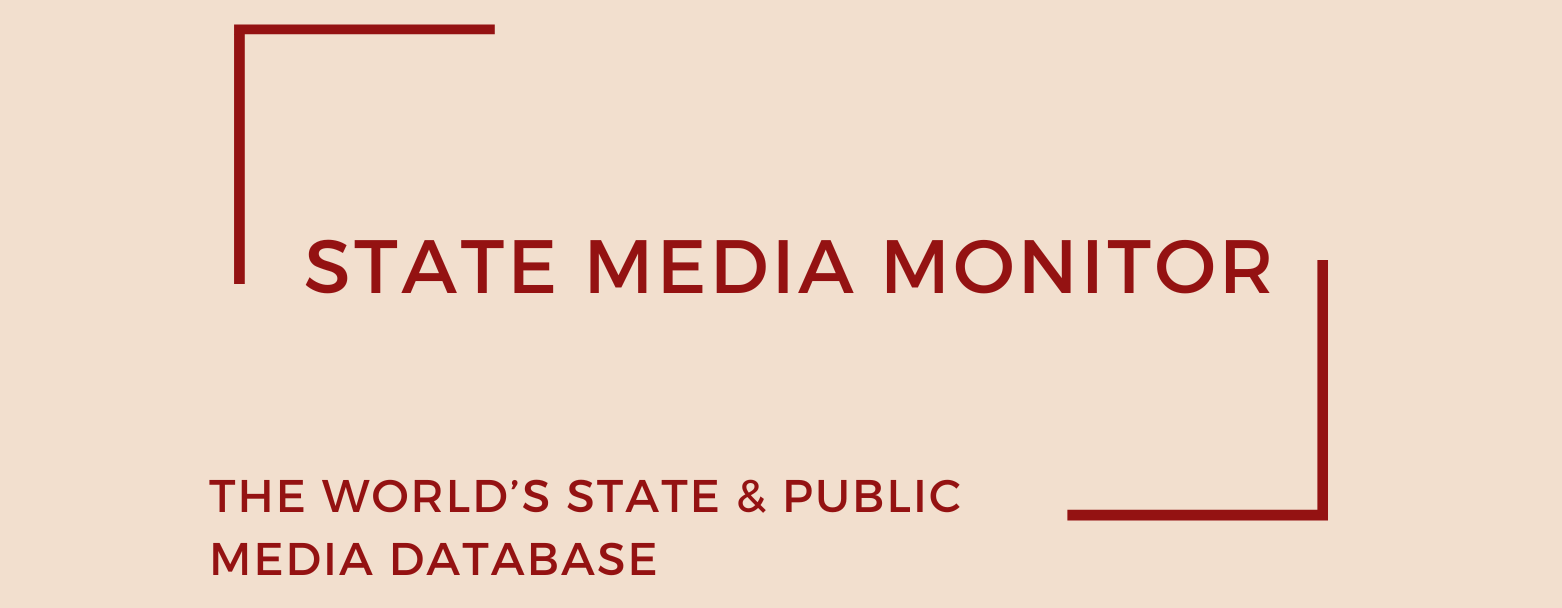State and Public Media in Sub-Saharan Africa in 2024
In Sub-Saharan Africa, the media landscape is largely shaped by state control, with 98% of the 131 media outlets in the region being either state-controlled or captured by public/state entities. This represents the highest level of state control observed globally and has remained unchanged compared to the previous year.
In contrast to the previous year’s findings, this project did not identify any shifts in the typology of media outlets in the region. This indicates a period of stagnation and a continued high level of state control.
The only three state and public media outlets in Sub-Saharan Africa that have been classified as having editorial independence according to our definition have remained unchanged from the previous year. Sidwaya, a government-run media company in Burkina Faso, operates various print publications and the Burkina Agency of Information (AIB), the country’s primary news agency. Société nouvelle de presse et d’édition de Côte d’Ivoire (SNPECI), a state-owned publishing house in Côte d’Ivoire, and Agence Ivoirienne de Presse (AIP), the official news agency in the same country, are also included.
State and public media in Sub-Saharan Africa continue to face financial challenges as they strive to maintain their independence while ensuring financial stability. Therefore, discussions about these media funding models remain a key topic in the wider debate about media in the region.
In South Africa, for instance, the government approved a bill in October 2023 that was intended to overhaul the legislation that governs the SABC. The bill proposed a new funding model for SABC, which was to replace the license fee with a household levy. The legislation has been the subject of criticism, however, due to a lack of clarity regarding the implementation of the proposed model. Government officials have stated that a financing model was to be developed within three years of the law’s enactment. Furthermore, the government intended to divide the SABC into two distinct entities: a commercial arm and a public service unit. However, the legislation was put on hold in March 2024 due to the limited time remaining before the country’s late May elections. In the meantime, the financial situation of the SABC continued to deteriorate. In the 2022/2023 fiscal year, SABC incurred a loss of ZAR 1.13 billion (US$63 million), representing the largest deficit since 2000.
In neighboring Zimbabwe, an increase in license fees has not resulted in improved financial health for the public broadcaster, ZBC. Local NGOs have, however, been quick to condemn the use of the SABC as a means of ensuring the government’s influence over ZBC.
The public broadcaster in Kenya, KBC, is facing a similar challenge, with years of debt and a need to generate more advertising revenue to meet expenses. KBC is facing the challenging task of restoring profitability, a process that could take a minimum of three years, due to a loan acquired some years ago to enhance its equipment and a liability from a lawsuit. However, this can only be achieved with the approval of a series of financial bailouts from the government.
The sub-Saharan African media market is characterized by a lack of functional efficiency, which reinforces the rationale for the state to retain a prominent role in the sector. The region also exhibits elevated levels of state ownership in the print media space. As previously outlined in our analysis from last year, approximately 20% of state-administered media entities are print media publishers. These entities originate from countries including Burundi, Mozambique, Tanzania, Zanzibar, Angola, and Namibia. The principal state-run publishers across Sub-Saharan Africa are Publications de Presse Burundaise (PPB), Sociedade de Notícias, Tanzania Standard Newspapers, Zanzibar Newspaper Corporation (ZNC), Edições Novembro E.P., and New Era, among others.
In the past year, Sub-Saharan Africa has also experienced a noticeable surge in the presence and impact of Chinese state media across the continent. This trend has been widely observed in the majority of countries, where state-controlled media entities have expanded their reach through collaborative contracts and partnerships with African state-run media outlets. This expansion primarily involves news agencies, as well as broadcast groups and publishers.
The intensification of Chinese state media influence in Sub-Saharan Africa has raised significant interest and concern among observers. It reflects a strategic effort by Chinese authorities to enhance their communication and information dissemination capabilities in the region. The collaboration between Chinese and African media entities has implications for the diversity of news sources and the narratives presented to audiences across the continent.
Read Sub-Saharan Africa Overview 2023
Read Sub-Saharan Africa Overview 2022
Read Sub-Saharan Africa Overview 2021
Citation (cite the article/profile as part of):
Dragomir, M. (2025). State Media Monitor Global Dataset 2025.
Media and Journalism Research Center (MJRC).
Zenodo.
https://doi.org/10.5281/zenodo.17219015
This article/profile is part of the State Media Monitor Global Dataset 2025, a continuously updated dataset published by the Media and Journalism Research Center (MJRC).
